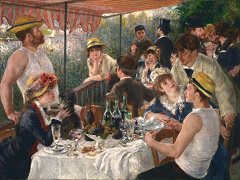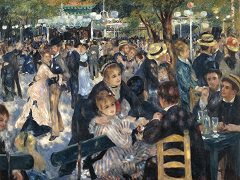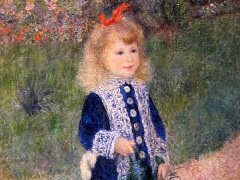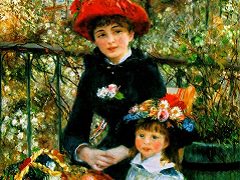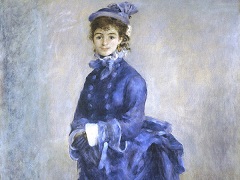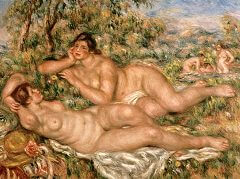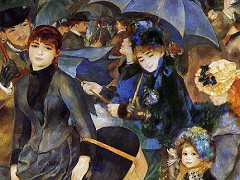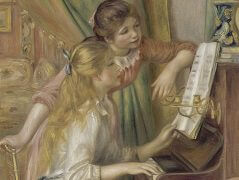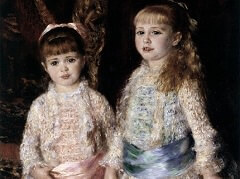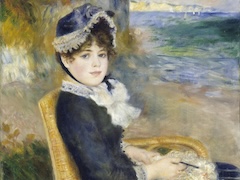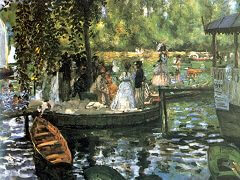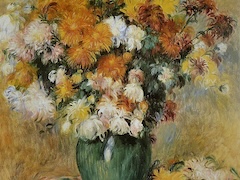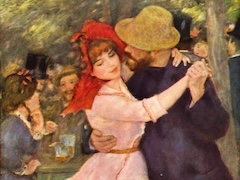La loge - by Pierre-Auguste Renoir
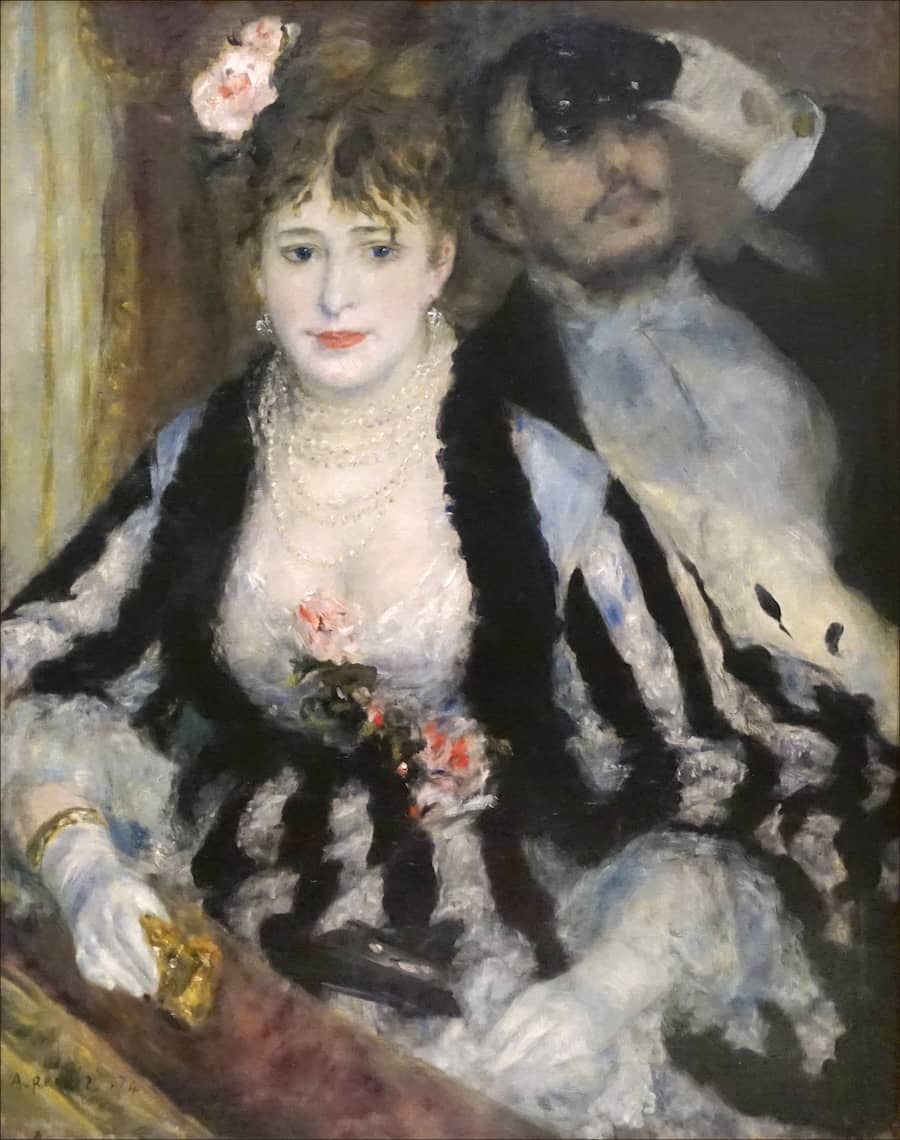
"Beauty," said Stendhal, "is the promise of happiness." To Renoir, a simpler man, the words are synonymous: beauty is happiness. The promise and the realization are one. This picture is a hymn to the beauty of woman. It is an image of health, an exaltation of maturity, an idealization of togetherness. With what tact Renoir has placed the man in the background, covered half his face, and subdued the detail with which he is rendered! The woman is offered for full and rapturous gaze; her face and body and costume are more flowerlike than the blossoms in her hair and corsage. She is a bouquet herself.
The man is Renoir's younger brother, Edmond, who worshiped him. The woman is Nini Lopez, one of Renoir's models at the time, "with a profile of antique purity." This goddess chose to leave Renoir shortly after and marry a tenth-rate actor.
"Black," said Renoir, "is the queen of colors." A typically Renoir choice, it plays throughout, lustrous, patterned, varied, uniting the man and the woman. The alternate stripes stream down from the woman's bosom and face, like a radiation from the glamorous flesh.
The picture is full of Renoir's best qualities. Every aspect, by plan or by instinct, is harmoniously developed for visual delight. Take, for example, the pairing of things: the man and the woman; the gold of her bracelet and the opera glasses; the double gold stripe below her hand; the two pink blossom clusters on her bodice; the two vertical stripes in the light drapery; the twin pinks of her face and the flower above it; the warm spots of his face and gloved hand; even, as a final flourish, the two splashes of black on the ermine at the edge of his shirtfront.
Again and again these paired attractions are related through short lower-right-to-upper-left diagonals; con-trasting diagonals form a major movement upward and into the picture through the positions of the railing, the woman, and the man.
One's eye keeps wandering back to that lovely face, its doll-like perfection set off by playful wisps of hair which keep this beauty from cloying. If painting can be compared J with music, surely this canvas is Mozartian.

